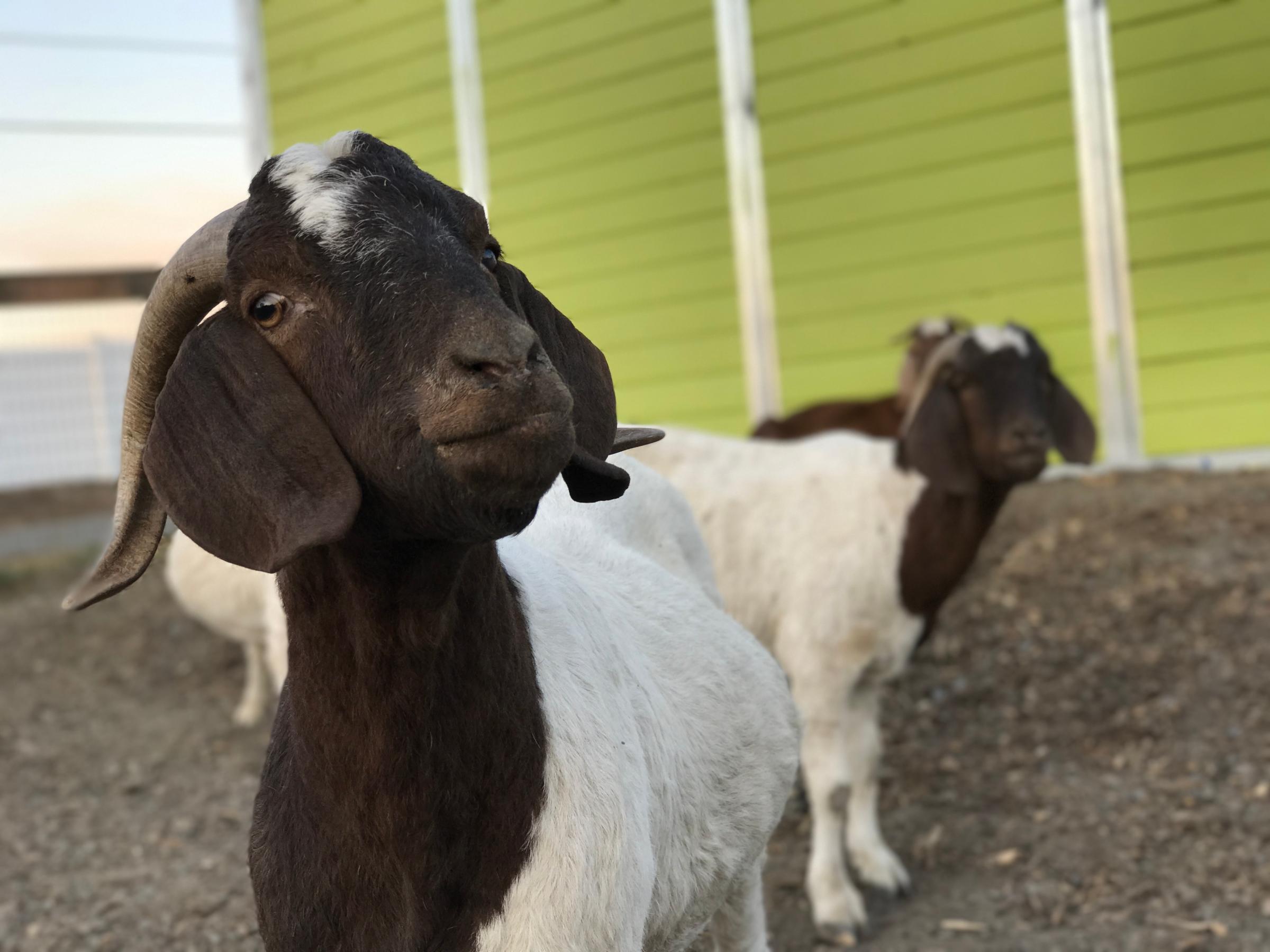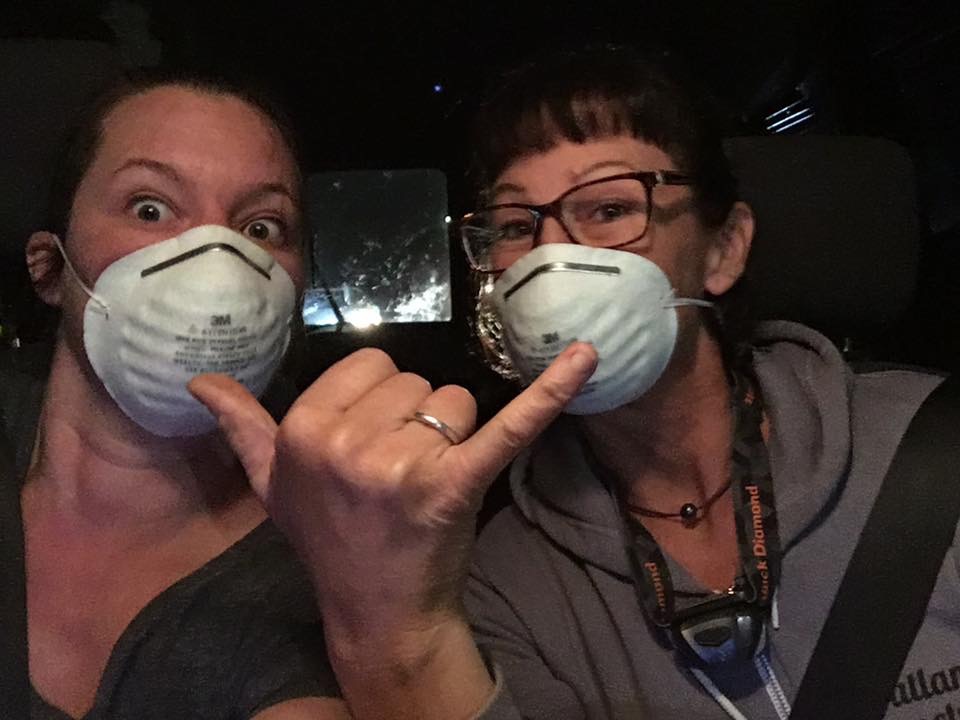Monica Stevens remembers that the first calls came in at exactly 10:45 p.m. on the night that fires began to rage in California, because “that’s when all hell broke loose.”
She and her husband run Jameson Animal Rescue Ranch in St. Helena, Calif., nestled among the agricultural communities of Napa and Sonoma counties. As tens of thousands of people were forced to evacuate their homes during the past two weeks because of deadly wildfires, many found themselves feverishly wondering how to protect creatures ranging from cats and chickens to horses and goats. Her organization alone has fielded over 600 calls.
“There’s a lot of dead animals all over the fire areas,” Stevens says, “but there are a lot of survivors as well.”
As fires crept up on communities, her team of workers raced to find homes for animals and coordinate rescues, as well as deliver supplies to evacuation areas set up for large animals at local fairgrounds. She recalls one couple in their eighties who live along Tubbs Lane in Napa and were forced to evacuate “kicking and screaming” because they did not want to abandon their six horses, along with cats and sheep. With planes spilling fire retardant overhead and the air thick with smoke, Stevens and fellow volunteers went back in with a large transport vehicle. “We had to go in twice,” she says, “because we couldn’t get all the horses in one load.”
Stevens estimates that as many as three thousand animals, including hundreds of horses, were displaced because of the flames in Napa and Sonoma alone and that just as many animals did not escape. As firefighters have made progress containing the flames, harried field operations have largely given way to the slower work of disaster recovery, which includes finding and rehabilitating animals that might have been penned in by fences that are no longer standing. “Many perished or are still out there,” she says.

The ongoing firestorm is one of the worst that the state has ever seen, particularly in Northern California. At least 42 people have lost their lives and about 7,000 structures have burned as firefighters have tried to contain dozens of wildfires. While human safety has been top of mind for emergency responders and residents in stricken areas, many have been forced to leave pets behind, going back to look for them days later. In Napa, some residents stood in long lines to be escorted back to homes in evacuation areas in the days after the flames started on Oct. 8. They were allowed to collect only medication or animals on these initial trips back, and many held empty pet carriers as they waited.
Some locals were forced to make hard choices about what to do with large animals as fires quickly approached their properties. Stevens recalls hearing from a local veterinarian that one couple in the Atlas Peak area — a part of Napa where some residents had to be air-lifted to safety — decided to shoot their horses “before they were enveloped by the flames.”
There are many stories with happier endings. Stevens has found homes for hundreds of displaced animals, ranging from llamas to ducks. (Among the rescued creatures in the area was an 85-year-old tortoise that weighed 200 lbs.) Deborah Blum, founder of a Santa Rosa-based animal sanctuary called Goatlandia, has doubled the amount of creatures under her care since before the fires began to just over 100. The newcomers include 14 goats — as well as a burro, pony and horse — that she and other volunteers evacuated from property surrounding a winery in the middle of the night.

One woman in the Santa Rosa area saved her 70-lb. dog by putting it in a duffel bag and biking away from the danger zone. Another woman managed to get her pony out in a Honda Accord. But many tales involve teamwork, as well as individual dedication to the cause.
People have connected on Facebook and rescue groups, with some looking for help and some offering transport vehicles or space for animals. “People would call and say, ‘Hey, I have two goats here and I need to get them out right now,'” Blum says. “Everything from chickens to goats to horses.” She credits social media with saving a lot of animal lives and says the outpouring of help in the area — ranging from the volunteers who have gone behind police lines to get animals to those now donating money for food and supplies — has been overwhelming: “We are definitely Sonoma Strong.”
Tracy Vogt, who runs another Sonoma-based animal sanctuary called Charlie’s Acres, quickly raised $7,500, using part of it to fill a trailer with horse feed and hay, which she delivered to the animal evacuation site at the Solano County Fairgrounds. Her own barn was damaged and fences leveled. “Everything was burning” she says. As of Thursday, the power and water were still not functioning at her property either, so her animals remained at a sanctuary that took them in down the California coast in Half Moon Bay. One of her brood is a pig named Gertrude that first came to Charlie’s Acres after a wildfire in the area last year. “So this is her second,” Vogt says.
Among such animal advocates, there is hope that people in the area will take time during the long recovery to make plans for what to do with their animals the next time wildfires break out. In the meantime, they will keep proselytizing about how the life of every animal has value. “It’s a good time to step back and see animals for more than just commodities,” Blum says. “For us, they’re equal.”
More Must-Reads from TIME
- Why Trump’s Message Worked on Latino Men
- What Trump’s Win Could Mean for Housing
- The 100 Must-Read Books of 2024
- Sleep Doctors Share the 1 Tip That’s Changed Their Lives
- Column: Let’s Bring Back Romance
- What It’s Like to Have Long COVID As a Kid
- FX’s Say Nothing Is the Must-Watch Political Thriller of 2024
- Merle Bombardieri Is Helping People Make the Baby Decision
Contact us at letters@time.com